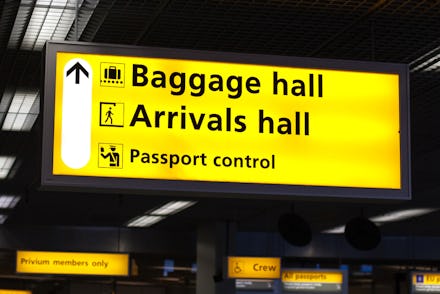How to know when a state department travel advisory should change your vacation plans

Preparing for a vacation is stressful enough, with all of that last-minute packing, passport double-checking, and destination selection — but it can become truly worrisome if suddenly you discover a State Department travel advisory has been issued for your vacation spot of choice. These numbered threat levels — issued by the U.S. Department of State — can provide important insight into potential overseas dangers, and in the case of some issued advisories, you may want to reconsider your travel plans or cancel a planned trip entirely. Wondering if you should still go on vacation when there’s a state department travel advisory? Here are three things to know ahead of time.
Understand what a travel warning is
According to Michelle Bernier-Toth, managing director for overseas citizens services in the Department of State’s Bureau of Consular Affairs, the Department of State issues travel advisories as a way of informing U.S. citizens planning for overseas travel. Other areas and countries — including Canada, Australia, and Europe have their version of travel warnings, too.
“We issue travel advisories for all countries and assign levels of advice to allow U.S. citizens to make more informed travel decisions,” she said. “We recommend all U.S. citizens review our information before deciding to travel to or within any foreign country. Our format helps travelers see specific areas where extra precautions may be necessary and what actions they should take.”
Any current travel bulletins are posted on the Department’s Bureau of Consular Affairs website. Each country is given a travel threat level by the Department — which ranges from Levels 1 - 4. When it comes to potential travel dangers, Level 4 is the highest threat level, with the department advising against potential travel to that area. For instance, a Level 4 warning is issued for Afghanistan, with the department warning of potential life-threatening crime and terrorism. Meanwhile, places like Australia, Japan, and Greece, remain at a Level 1, with travelers being advised to practice normal safety precautions. Antartica currently has a Level 2 warning — noting potential weather danger —and Venezuela has a Level 3 warning because of “crime, civil unrest, poor health infrastructure, and arbitrary arrest and detention of U.S. citizens.”
Should you still travel if a state department travel warning is issued?
Based on the threat level issued, you may want to reconsider your trip or make alternative travel plans. As Leiti Hsu, Cofounder of Journy explained, it all depends on the level of the threat issued. “If it’s a new advisory, travelers may want to adjust their plans,” she said. Hsu noted that past events, including Brexit protests, the Yellow Vest protests in France, and a 2017 terrorist attack in Barcelona, Spain all temporarily raised Department advisory levels.
When it comes to cancelling or altering your planned vacation, look for advisories that are at Level 3 or Level 4. Level 3 indicates that you should begin to reconsider your travel and Level 4 means you should avoid that area entirely. However, it is important to note that despite warnings being issued, the State Department cannot physically stop you from traveling to a destination.
In a previous statement issued by Bernier-Toth, she explained, saying, “We cannot prevent people from traveling to a country. The “do not travel” is our recommendation. The exception, though...is that we do have a general travel restriction on the use of a U.S. passport for North Korea.”
You can be prepared for potential warnings
For travelers already planning trips that will take them out of the country, Bernier-Toth recommends signing up for the Smart Traveler Enrollment program (STEP). Those that sign up in advance of their departure date can receive alerts and updated travel advisories. Hsu pointed out that travelers who worked with someone to plan their trip can also check in with that person to discuss any concerns or make alternative plans.
If warnings are issued while you’re abroad, the Department of State recommends contacting the closest U.S. Embassy or consulate. Their number — 888-407-4747 or 202-501-4444 is staffed 24 hours a day, 7 days a week.
Although it’s hard to plan for the unexpected during your vacation, being prepared and keeping important information or signing up for government travel programs like STEP can help alleviate some of the stress that may accompany traveling far from home.